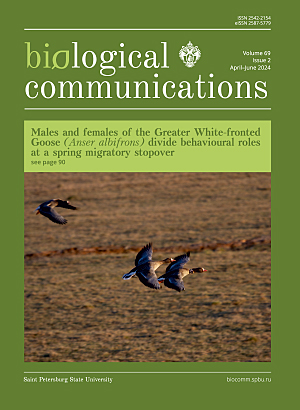A new Peribacillus simplex d27.3 strain mediates antimicrobial activity through a combination of secondary metabolites, including fengycins
DOI:
https://doi.org/10.21638/spbu03.2024.206Abstract
Soil is a classical source of beneficial microorganisms. Soil microbiomes provided the overwhelming majority of antibiotic-producing strains, biocontrol agents, probiotics, and plant-protecting bacteria. The functionality of strains isolated from various soil samples is predetermined by the biosynthetic potential encoded in their genomes. Here, we describe a novel Peribacillus simplex d27.3 strain isolated from the soil sample of a pine forest in the Republic of Dagestan, Russia. P. simplex d27.3 displayed antibiotic activity against gram-positive bacteria and fungi while being inactive against the model hypersensitive gram-negative strain E. coli ΔlptD. Metabolomic analysis revealed that antimicrobial activity was partially mediated by the fengycin lipopetides (C-16 fengycin A, C-17 fengycin A, and C-16 fengycin B). In addition, the P. simplex d27.3 strain was found to produce other hydrophilic and more hydrophobic antimicrobials yet to be described. Thus, the P. simplex d27.3 strain is a producer of useful antimicrobial compounds with a high potential for application in biotechnology and agriculture.
Keywords:
Peribacillus simplex, fengycins, antibiotics, soil microbiome
Downloads
References
Downloads
Additional Files
Published
How to Cite
License
Articles of Biological Communications are open access distributed under the terms of the License Agreement with Saint Petersburg State University, which permits to the authors unrestricted distribution and self-archiving free of charge.





